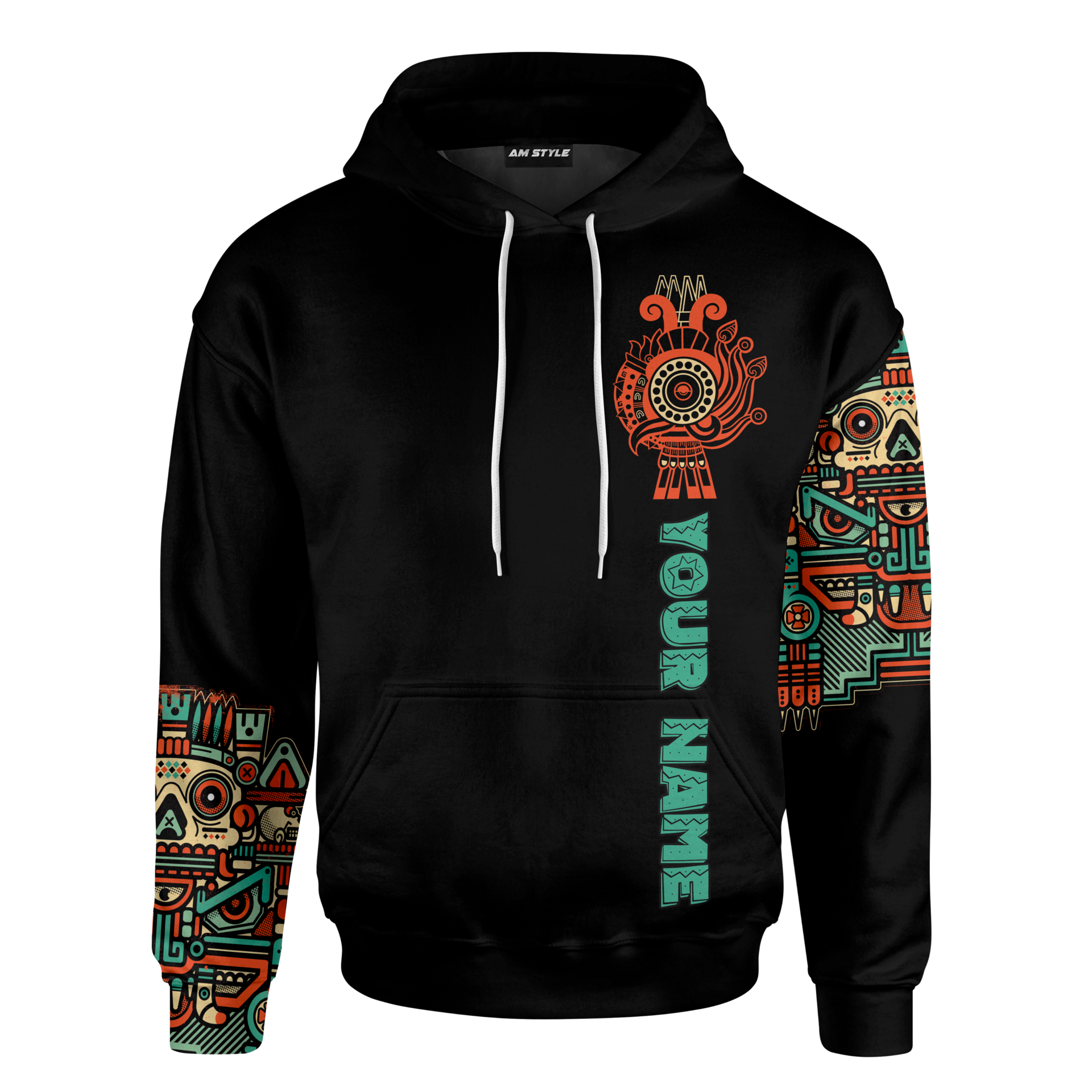Ometeotl, the twin creator god, had three sons, the third of whom was Quetzalcoatl. Xipe Totec and Tezcatlipoca were his older brothers, while Huitzilopochtli was his younger brother.
According to other traditions, Quetzalcoatl was the son of the goddess Chimalma. Mixcoatl (the Aztec god of the hunt) is claimed to have impregnated the goddess Chimalma by shooting an arrow from his bow.
Mixcoatl was said to have fired a shot at Chimalma for ignoring his advances. Chimalma, on the other hand, caught the arrows in her hand, earning her the nickname "Shield Hand." Chimalma later married Mixcoatl, but the couple was unable to have children together. Chimalma became pregnant with Topiltzin-Quetzalcoatl after worshipping at an altar to Quetzalcoatl and ingesting a precious stone (emerald or jade, depending on the version of the story). Topiltzin-Quetzalcoatl, also known as One-Reed and Ce-Acatl, formed a dynasty that lasted until 1070CE.
Mythology
Quetzalcoatl's position in Aztec cosmology was varied and intricate. While he was responsible for the creation of humanity and the provision of staple foodstuffs, it was his brother Tezcatlipoca who eventually dominated the modern era. Quetzalcoatl's role, like that of many of his contemporaries, has been rewritten throughout history to better suit the sensibilities of contemporaneous Spanish writers who were attempting to fathom a whole other way of thought. Quetzalcoatl was portrayed as a trickster god, and while his schemes did not always work out, they were always beneficial to humanity.
The Creation of the World
Quetzalcoatl was one of the four sons of the Aztec creator gods Ometecuhtli and Omecihuatl, and he was instrumental in the formation of the universe. He and his family waited 600 years after his birth for his youngest brother, Huitzilopochtli (who was born without flesh), to join them in the cosmic construction process.
The creation of the cosmos was credited to Quetzalcoatl and either Huitzilopochtli or Tezcatlipoca (depending on the story). They sculpted a half sun after generating fire and gave birth to the first man and woman.
Quetzalcoatl worked in opposition to his brother Tezcatlipoca in numerous versions of the tale. In Aztec mythology, the black jaguar (Quetzalcoatl) was frequently opposed against the flying serpent (Quetzalcoatl) (Tezcatlipoca).
Each bout of battle marked the end of one of Aztec history's four epochs, culminating in Tezcatlipoca's rule of the fifth (and current) period.
5 During this time, it was possible for Quetzalcoatl to reclaim power and defeat his brother. When the Spanish conquistadors arrived in the 16th century, this possibility became mythologically significant.
Stealing Bones from the Underworld
Quetzalcoatl was essential in the creation of the fifth age's population. Quetzalcoatl had to infiltrate into Mictlan's underworld and deceive Mictlantecuhtli and Mictecacihuatl, the Lord and Lady of Death, into handing over the bones they guarded. Mictlantecuhtli would only give Quetzalcoatl the bones if he could make a sound by blowing into a conch shell without any holes. Through deception, Quetzalcoatl was able to complete the challenge. He used worms to bore a hole in the conch shell, then filled it with bees. Mictlantecuhtli was duped into delivering Quetzalcoatl the bones as a result of Quetzalcoatl's deeds. This, however, was insufficient for Quetzalcoatl. Quetzalcoatl told Mictlantecuhtli that he would leave Mictlan without the bones in an attempt to further deceive him.
Mictlanecuhtli, however, discovered Quetzalcoatl's lie before he could flee Mictlan. Quetzalcoatl's escape was thwarted when a deep pit appeared in front of him. Quetzalcoatl was knocked unconscious as he fell into the hole, mixing up the bones he was carrying. After his eventual escape, Quetzalcoatl mingled his blood and corn with the now slightly rearranged bones to produce the first humans of the fifth era. 6 This metaphor was employed by the Aztecs to explain why humans arrived in a variety of heights.
The Discovery of Maize
According to mythology, the Aztecs could only eat roots and wild wildlife at first. Maize was grown on the other side of a mountain range that encircled the Aztec homeland at the time. Other gods had attempted to rescue the maize by shifting the mountains, but all of their attempts had failed.
Where others had relied on their raw power to solve this dilemma, Quetzalcoatl preferred to rely on his smart mind. He then transformed into a black ant and chased after the other ants across the mountains. Quetzalcoatl arrived at the maize after a long and laborious journey and returned to the Aztecs with a kernel.
In some versions of the mythology, Quetzalcoatl discovers a massive mountain of seeds that he is unable to move on his own. Instead, he enlisted the help of Nanahuatzin, who used lightning to obliterate the mountain. Tlaloc, a rain god who is typically associated with Quetzalcoatl, snatched the seeds from the ground and scattered them across the continent.
The item listed below is made to be Aztec inspired and personalized for customs. These features are not just made your style become more typical for the Aztec Community but also stand for our pride in ourselves and our original.
Aztec and Maya cultures were known for their extravagant jaguar helmet masks, but this type of mask has been used in many other civilizations. Today, they are not just seen in artwork but can be purchased as an art piece to wear yourself. These masks come with a variety of different materials to include wood, leather, or plastic. You can also get them painted in any color you want so it matches your personality!


Nhận xét
Đăng nhận xét